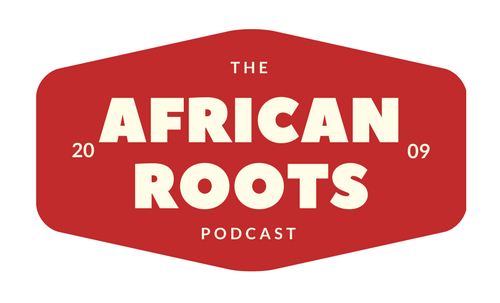Welcome back to the 426th episode of the African Roots Podcast! You can always reach me HERE.
Yes, I confess—it has been a long while since I uploaded a podcast, and now after having put more than 3000 miles under my belt, I am finally rested and back at it!
In February, I had the experience of attending Roots Tech 2018–and what an experience that was! The following week, instead of returning to the east coast I kept going west traveled to northern California. I had the honor of presenting at the 13th annual African American Genealogy conference. What an experience–there are so many people to thank for their hospitality, their graciousness and their making me feel so very welcomed! A heart felt thank you to all who were a part of that event! I was so very honored!
Well—I have a short but interesting thing to share with you this week—this is a new publication. For those who have an interest in Maryland history this might be worth examining. For those with a detailed interest in Baltimore City history, this will become something to study, and for those with an interest in free people of color in early 19th century America, this will be a useful tool.
The work is called, “Through the Tax Assessor’s Eyes: Enslaved People, Free Blacks and Slaveholders in Early Nineteenth Century Baltimore”.

The book is authored by Noreen J. Goodson and Donna Tyler Hollie. Both are volunteers at the Maryland State Archives. When former state archivist share the tax assessor’s list from Baltimore City with the two of them, they immediately recognized the value of having such information and the need to present it to the public. The book contains data pertaining to taxed property–including the enslaved property as the tax assessor saw them. Their focus was to highlight both enslaved and free people of color, and of course the useful information including the slave holder.
They meticulously extracted the names of each slave holder with the names of the people held enslaved, but in addition, free people of color were included, along with any notes that the tax assessor included.
Often when researching people in large cities who were held enslaved one does not always know where the individuals lived. The addresses of the slave holders and free people are contained in this work. If one is able to obtain a sound gazetteer reflecting the older streets, alleys, and rows, one may glean more information about the family’s life in the early 19th century.
Included on their database, is also the occupation of the slave holder. If one was listed as a cooper, or blacksmith by trade, and if there were enslaved men in that household, then one might wish to learn more about the trade, because the enslaved people would have provided much of the labor that sustained the slave holder’s work. This can be useful data when telling the family’s narrative, so there are many ways in which data from this work can be used.
The authors focused on two years for this book–1813 and 1818. There are other years, from which there is data that can be obtained, but they chose these two years because they were able to access the ledgers in the original format. From those two ledgers they compiled detailed spreadsheets that make up the content of the book. This can be also used as an early “census” since the names of the enslaved as well as free people of color are included.
For those whose ancestors were enslaved, and were found in the 1870 census—if any of those in the 1870 census were old enough to be living in 1813 or 1818, one might find them on that ledger and connected directly to the slave holder. For those whose ancestors were free people of color, seeing their name on the tax assessor’s list may provide more information for the researcher to enhance the family narrative. Learning more about the occupation of the family will also provide a clearer glimpse into the lives of the family two hundred years ago.
Of course, all focused researchers will want at some time to have access to the original ledger or make an inquiry about the source. If one wishes to access the original record itself, one will have to contact one of the authors, directly, for a citation number from the Maryland State Archives. A second option will be to contact or visit the Maryland Hall of Records for more detailed information on how to see the original documents.
The authors are both experienced researchers and have a strong genealogical resume. Noreen J. Goodson is a retired teacher who has been researching family history for over thirty years. She teaches genealogy classes, and volunteers weekly at the Maryland State Archives. She serves as corresponding secretary of the Baltimore chapter of the Afro-American Historical & Genealogical Society (AAHGS).
Donna Hollie is professor emerita of history at Sojourney-Douglass College. She serves as vice-president for history of the Baltimore AAHGS chapter.
The book can be obtained online from www.genealogical.com, and can also be ordered directly from Amazon.
Well, this is a short podcast but another one to follow in a few days. In the meantime, thank you for tuning in and remember to keep researching, keep documenting, and keep sharing what you find.

